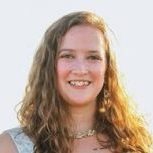November 28th, 2018 marked the first workshop in the second year of the Creativity in Elder Care Program at UA COM-P. This is an interdisciplinary program in more ways than one, bringing different health professional programs together to explore various forms of creative expression and their applications in elder care.
The project is the brainchild of Dr. Cynthia Standley, director of the Art in Medicine Program, and Gary Glazner, founder and director of the Alzheimer’s Poetry Project.
After attending the workshop, I reached out to Mr. Glazner and Dr. Standley to learn more about their unique backgrounds and what they think makes this program special.
Their answers are below, but stay tuned for future Differential articles about the science behind creativity and elder care, and the student experience of this program.
- Can you talk briefly about your backgrounds, and what sparked your original interest in poetry and other creative arts?
CS: I have always been interested in art. I debated being a double major in art and biology in college, thinking I’d want to do scientific illustration, but ended up going the route of science, and keeping art in the background. Once established in my career, I took a series of classes in botanical illustration, and my favorite medium to work in is pen and ink. I love doing anything art-related, and I always keep a sketchbook and pencil with me.
GG: My study of poetry began when I took a class with David Rollison at Indian Valley Community College in Northern California, and I later received a degree in Expressive Arts at Sonoma State University. I wrote my final paper on the Beat poet Lew Welch. Welch wrote about Muir Beach and Mount Tamalpais in Marin County, just north of the Golden Gate Bridge where I had grown up. He wrote about the power of turkey vultures and dancing on wobbly rocks on the beach. It hit home for me. He performed, singing and chanting his poetry at readings. He also wrote about the power of natural speech. That idea of poetry as a recited, performed art is at the core of the Alzheimer’s Poetry Project.
At the same time, I took Psychobiology, taught by Mike Godsey, who was teaching the same class at University of California, Berkeley. This was in 1979, so I was pretty lucky to be able to take such a forward-thinking class at a small community college. As I was falling in love with poetry, I also became quite enamored with synapses, neurotransmitters, and the study of the brain. The Creativity in Elder Care program continues my exploration of those twin passions.
- The Creativity in Elder Care program is a joint project based on Mr. Glazner’s work as founder and director of the Alzheimer’s Poetry Project. Can you comment on how you met and decided to work together?
CS: I was invited to a seminar (that Gary was giving) at the Banner Alzheimer’s Institute by one of our fellow faculty members from the College of Medicine. I attended and was blown away by what Gary was doing. I approached him after the talk and asked him if there was any way we could get medical students involved. He was very excited about the possibility, and so, after some brainstorming, we put together a proposal and submitted it to the BHHS Legacy Foundation that subsequently funded our first program. It was quite a success, and we recently received funding from the Arizona Commission on the Arts to offer another program and involve other health profession students.
GG: I had been hired to provide a workshop to help train and teach artists as part of a project for the Arizona Arts Commission. During that visit, I had reached out to Banner Alzheimer’s Institute, and they invited me to give a talk on using poetry with people living with memory loss. After the talk, Dr. Standley introduced herself. We talked about the Arts and Medicine program. I asked her if they needed a poet. She was quite enthusiastic, and we began to plan the class. Within two months, she was awarded a grant to fund the class. Dr. Standley has been amazing at writing grants to help fund the Creativity in Elder Care and make it a reality.
- How did you adapt the work Mr. Glazner had done with Alzheimer’s Poetry Project for use in a health professional education setting?
CS: Gary is very knowledgeable about using the creative arts with elders (he is the author of Dementia Arts: Celebrating Creativity in Elder Care), and thus, he was instrumental in developing the program to be used with medical students. I supplement the program with information on memory function and also make the connections with local senior centers, such as the SunTree Adult Day Center and other programs such as the Dementia Arts Program at the Phoenix Museum of Art, where our students go to put what they’ve learned into action. In this next program, we are also going to highlight local artists in various creative modalities who are doing work with elders and those with dementia.
GG: The Creativity in Elder Care program looks at best practices in arts and health care programs using art-making and -looking, dance, music, storytelling, theater improvisation, and poetry. In each of the workshops, the students both learn about the best practices and create something themselves. They might create a playlist of favorite songs or a story drawn from their lives.
The study material also includes stories about each of the arts disciplines, and we look at narrative structure. The idea is that studying narrative helps promote better listening and can help with patent communication.
The classes this year are including Occupational Therapy (OT) students, so we are excited to see how the methods and techniques used in the best practices might be adapted into OT methods. For example, reciting a poem or singing while engaged in a movement can build strength in a person’s arm. Would this mean they would stay engaged longer? Or be more likely to do the exercise if it is coupled with an art activity the person finds engaging?
We continue, as part of the class, the attitudinal study to see if observing elders engaged in creative interventions effects the medical and OT students. Last year’s results indicated the students had a more positive view after participating in the workshops.
- As you enter the second year of the Creativity in Elder Care Program, what have been the greatest challenges and successes in the past year?
CS: One of the biggest successes has been seeing medical students realize that elders have a lot to offer and are fun to work with! We are working to reduce the stigma that older adults are difficult patients. Also, to see the light bulbs turn on when you’ve engaged someone in use of the arts is very rewarding. I think challenges will always be related to time: finding the best time for students to disengage from studying for a bit and learn something new. Working around exams and finding that extra effort when all of this is extracurricular, that is the challenge.
GG: Seeing the students have such success in the culminating event at SunTree Adult Day Program was heartening. During the session, one of the participants said, “We’ve had a lot of good programs, but nothing like this!” Seeing the students and elders interact and the smiles on their faces were amazing.
Another fun moment was in the workshop on dance. Typically, when the class ends, everyone runs off at the exact minute it is over. With the dance workshop, we ended by playing James Brown. The students and Dr. Standley just kept dancing; they would not stop! They were having such fun!
- What is one thing you would like everyone to know about this project?
CS: Through this program, we celebrate a person’s potential rather than focusing on their problems or deficits. If you just take the time to engage with someone, you might be surprised how often a person with dementia will come to life and join in with great enjoyment!
GG: On a personal note, one of the experiences that has meant the most to me was when Dr. Standley arranged for me to visit the Gross Anatomy Laboratory. I was able to hold the brain of a person that had visible deterioration from Alzheimer’s disease. A direct link to that experience was being invited to present a paper last summer at the Ninth Annual Hippocrates Poetry & Medicine Symposium, Co-Sponsored by Northwestern University Feinberg School of Medicine and the Harvard Medical School in Chicago.
Here is how I ended the paper: “As I held the inert, grayish flesh, and the formaldehyde filled my nostrils, I knew if there was inspiration, it was in the search for knowledge. This is a call for action and further study, to push forward our knowledge of how poetry works at the neurological level.”
After the conference, I was approached by the Arts Editor for JAMA and invited to submit a paper, which was published in the December 11th, 2018 issue. It is the most in-depth description of my theory of what is happening at the neurological level, when you are performing poetry. The paper can be read here: https://tinyurl.com/y8sd9eqv
Charlotte Archuleta is a class of 2020 medical student at UACOM-P and a very happy Arizona transplant. She moved to Arizona in 2012 after graduating from UNC Chapel Hill with an English and Dramatic Arts degree. She also has a Master's degree in Physiology and Complementary and Alternative Medicine from Georgetown. She chose to pursue medicine because she loves learning. She is excited to bring this passion to her future health care career.


